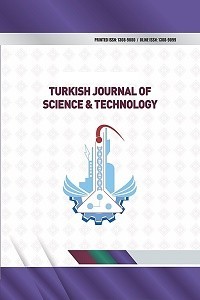Multilingual Text Mining Based Open Source Emotional Intelligence
Multilingual Text Mining Based Open Source Emotional Intelligence
___
- Eliot Higgins, “We Are Bellingcat: An Intelligence Agency for the People”, Bloomsbury Publishing, 2021, pp. 9-63.
- Stevyn Gibson, “Open Source Intelligence, An Intelligence Lifeline”, Royal United Services Institute Journal, 2004, pp 5-6.
- Svetlana Tupikova, “Cognitive Foundations of Communicative Tonality”, Lambert Academic Publishing, 2020, pp. 28-44.
- A.G. Dodonov, D.V. Lande, V.V. Prishchepa, V.G. Putyatin, “Computer competitive intelligence”, Engineering, 2021, pp. 15-18.
- F. Pedregosa, G. Varoquaux, A. Gramfort, V. Michel, B. Thirion, O. Grisel, M. Blondel, P. Prettenhofer, R. Weiss, V. Dubourg, et al., “Scikit–learn: Machine learning in Python“, J. Mach. Learn. Res. 2012, pp. 2825–2830.
- We are social and Hootsuıte, “Digital 2020” report, 2021.
- Engin Sorhun, “Machine Learning with Python”, Abakus, 2021, pp. 9-43.
- Joseph M. Hilbe, “Practical Guide to Logistic Regression”, CRC Press, 2016, pp. 49-70.
- V. V. Stenanenko, I. I. Kholod, M. S. Kupriyanov, “Data Analysis Technologies: Data Mining. Visual Mining. Text Mining, OLAP”, BHV-Petersburg, 2007, pp. 194-223.
- Harkamal Preet Pal Singh Ubhi, “The Social Media Guide”, Rakuten, 2019, pp. 7-31.
- Bing Liu, “Sentiment Analysis”, Cambridge University Press, 2020, pp. 16-46.
- Michael Bowles, “Machine Learning with Spark and Python: Essential Techniques for Predictive Analytics”, Wiley, 2019, pp. 129-166.
- ISSN: 1308-9080
- Başlangıç: 2009
- Yayıncı: Fırat Üniversitesi
Genetic Algorithm-Based Optimization of Mass Customization Using Hyperledger Fabric Blockchain
Nursena BAYĞIN, Mehmet KARAKÖSE
Sefa KAZANÇ, Canan AKSU CANBAY
Determination Some Physical Properties of Ground NiMnCoSn Magnetic Shape Memory Alloy Powders
Ecem ÖZEN ÖNER, Muhammed KANCA, Yakup SAY
Some Quantum Integral Inequalities Based on Left-Right Quantum Integrals
Mehmet KUNT, Abdul BAİDAR, Zeynep ŞANLI
Mathematical Analysis of The Hash Functions as a Cryptographic Tools for Blockchain
Narin ASLAN, Sengul DOGAN, Gonca ÖZMEN KOCA
Multilingual Text Mining Based Open Source Emotional Intelligence
Tarihi Yığma Köprülerin Farklı Depremler Altında Dinamik Analizi: Murat Bey Köprüsü Örneği
